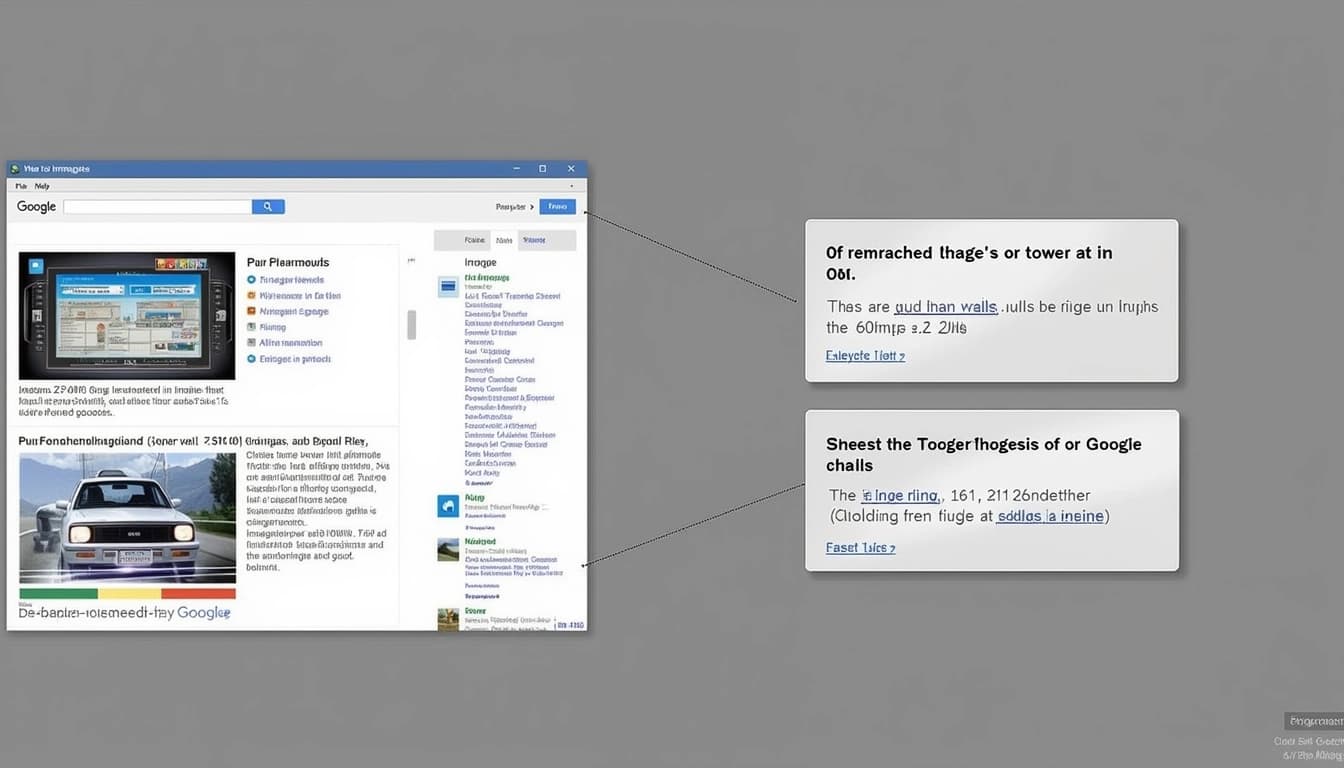
Google's Imagen-3-Fast: A Faster Alternative to Imagen 3
By John Doe 5 min
Google's Imagen-3-Fast: A Faster Alternative to Imagen 3
Research suggests Imagen-3-Fast is a faster, cost-effective version of Google's Imagen 3, prioritizing speed over the highest image quality.
Key Points
- Research suggests Imagen-3-Fast is a faster, cost-effective version of Google's Imagen 3, prioritizing speed over the highest image quality.
- It seems likely that Imagen-3-Fast generates "good-quality" images in under 4 seconds, while standard Imagen 3 takes under 10 seconds for "very high-quality" images.
- The evidence leans toward Imagen-3-Fast being ideal for quick iterations, like brainstorming, compared to Imagen 3's use for final, detailed outputs.
- An unexpected detail is that Imagen-3-Fast is available on platforms like Replicate, offering predictable pricing by image generation.
Overview of Imagen-3-Fast
Google's Imagen-3-Fast is a variant of the Imagen 3 model, designed to balance speed and cost efficiency. It generates images quickly, making it suitable for scenarios where rapid production is key, such as creative brainstorming or large-scale image generation tasks.
Comparison with Other Google AI Models
Compared to earlier versions like the original Imagen (2022), Imagen 2, and the standard Imagen 3, Imagen-3-Fast offers a trade-off. While Imagen 3 provides the highest quality with detailed textures and lighting, Imagen-3-Fast is faster but with slightly lower quality, fitting different use cases within Google's AI ecosystem.
Performance and Use Cases
Imagen-3-Fast is particularly useful for internal use or when quick feedback is needed, such as fine-tuning prompts. In contrast, Imagen 3 is better for final, high-quality outputs like professional visuals or detailed illustrations.
Detailed Analysis: Google's Imagen-3-Fast and Comparison with Other AI Models
In the dynamic landscape of artificial intelligence, text-to-image generation has emerged as a transformative technology, enabling users to create visual content from textual descriptions with remarkable ease. Google, a leader in AI innovation, has developed the Imagen series, with its latest iteration, Imagen 3, setting new standards for quality and photo
The Imagen series by Google represents a significant leap in text-to-image generation technology. Starting with the original Imagen in 2022, the series has evolved to include Imagen 2 and the latest Imagen 3, each offering improved photorealism and image-text alignment. These models leverage large transformer language models for text encoding and diffusion models for image generation, setting new benchmarks in the field.
Understanding the Imagen Series
The Imagen series began with the original Imagen model, which introduced a novel approach to text-to-image generation. It utilized a large language model like T5 and diffusion models to produce high-fidelity images, achieving a state-of-the-art FID score of 7.27 on the COCO dataset. This model laid the groundwork for subsequent improvements, including Imagen 2, which enhanced prompt alignment and image quality, and Imagen 3, the current flagship model.
Original Imagen (2022)
The original Imagen model was a groundbreaking development in AI-generated imagery. It demonstrated the potential of combining large language models with diffusion techniques to create photorealistic images from text prompts. The model's success was measured by its ability to generate high-quality images without being trained on the COCO dataset, showcasing its generalization capabilities.
Imagen 2
Imagen 2 built upon the foundation of the original model, delivering even higher-quality outputs with better alignment to user prompts. It was integrated into various Google products, such as Gemini and Search Generative Experience, and used in creative projects like the Google Arts and Culture team's Cultural Icons experiment. This version highlighted the practical applications of text-to-image generation in real-world scenarios.
Imagen 3
Imagen 3 is Google's most advanced text-to-image model to date. It excels in rendering diverse art styles, from photorealism to impressionism and anime, with improved color balance and texture detail. The model is designed to produce images with fewer distracting artifacts and richer lighting, making it a versatile tool for creative professionals and enthusiasts alike.
Introducing Imagen-3-Fast
Imagen-3-Fast is a specialized variant of Imagen 3, optimized for speed and cost efficiency. This model is tailored for users who require rapid image generation without compromising too much on quality. While it may not match the full capabilities of Imagen 3, it offers a practical solution for applications where speed and affordability are critical factors.
Conclusion & Next Steps
The Imagen series, including the new Imagen-3-Fast, showcases Google's commitment to advancing text-to-image generation technology. Each iteration brings improvements in quality, speed, and versatility, opening up new possibilities for creative and practical applications. As the technology continues to evolve, we can expect even more sophisticated models that push the boundaries of what AI can achieve in visual content creation.
- Original Imagen set the benchmark for text-to-image generation.
- Imagen 2 improved prompt alignment and integrated with Google products.
- Imagen 3 offers the highest quality with diverse art styles.
- Imagen-3-Fast provides a cost-effective and speedy alternative.
Imagen-3-Fast is a specialized version of Imagen 3, designed to prioritize speed and cost efficiency over maximum image quality. It is described as a 'faster and cheaper' model, suitable for scenarios where rapid generation is more critical than the finest details.
Speed and Efficiency
Imagen-3-Fast can generate four 'good-quality' images in less than four seconds, compared to Imagen 3, which takes under ten seconds to generate four 'very high-quality' images. This makes it ideal for quick iterations and prototyping.
Quality Trade-Off
While the exact definition of 'good-quality' versus 'very high-quality' is not numerically specified, qualitative assessments suggest that Imagen-3-Fast may have compromises in resolution, detail, or accuracy compared to Imagen 3. This makes it less suitable for final, professional outputs.
Use Cases
Imagen-3-Fast is particularly useful for internal use, such as fine-tuning prompts or generating a large number of images efficiently. It is also noted for its suitability in creative brainstorming sessions, where speed is prioritized over perfection.
Availability and Pricing
Imagen-3-Fast is available on platforms like Replicate, where it is priced by the number of images generated, offering predictable costs compared to time-based billing. This model is described as focusing on speed and cost efficiency, making it appealing for users needing quick results.
Comparison with Other Google AI Models
To contextualize Imagen-3-Fast, it is essential to compare it with other versions in the Imagen series and understand its position within Google's broader AI ecosystem. The following sections will delve into these comparisons.
- Imagen 3: High-quality, slower generation
- Imagen-3-Fast: Faster, lower quality
- Other models: Varied use cases and trade-offs
The following table summarizes the key differences between various Imagen models. Each model has unique strengths and weaknesses, making them suitable for different applications. Understanding these differences can help users choose the right model for their specific needs.
Model Comparison Overview
The table provides a detailed comparison of the Original Imagen, Imagen 2, Imagen 3, and Imagen-3-Fast models. It highlights their release years, primary focuses, generation speeds, image quality, and typical use cases. This information is crucial for anyone looking to leverage these models effectively.
Original Imagen vs. Imagen-3-Fast
The original Imagen set the foundation with high-quality outputs, but its generation speed was moderate compared to Imagen-3-Fast. Imagen-3-Fast's focus on speed makes it more suitable for modern, fast-paced applications, though it may not match the original's quality in certain detailed scenarios.
Imagen 2 vs. Imagen-3-Fast
Imagen 2 improved upon the original with better prompt alignment and quality, but its generation speed is slower than Imagen-3-Fast. Imagen-3-Fast's trade-off in quality makes it less ideal for professional, photorealistic outputs where Imagen 2 excelled.
Imagen 3 vs. Imagen-3-Fast
The most direct comparison is between Imagen 3 and Imagen-3-Fast. Imagen 3 offers the best quality with superior details, lighting, and art style rendering, taking under 10 seconds for high-quality outputs. Imagen-3-Fast, while faster (under 4 seconds), produces 'good-quality' images, suitable for internal use or quick feedback, but may lack the finesse of Imagen 3.
Key Takeaways
Each model serves a distinct purpose, from high-quality professional outputs to rapid prototyping. Choosing the right model depends on the specific requirements of the project, whether it's speed, quality, or a balance of both.
- Original Imagen: Best for initial research and general use.
- Imagen 2: Ideal for creative projects and professional outputs.
- Imagen 3: Perfect for final outputs and detailed illustrations.
- Imagen-3-Fast: Great for quick iterations and brainstorming.
Google's Imagen-3-Fast is a streamlined version of the Imagen 3 text-to-image model, designed for rapid image generation with reduced computational costs. It maintains the core capabilities of Imagen 3 but prioritizes speed and efficiency, making it ideal for applications where quick iterations are more critical than ultra-high-quality outputs.
Key Features of Imagen-3-Fast
Imagen-3-Fast offers several notable features, including faster generation times and lower computational requirements. While it sacrifices some of the fine details and textures found in Imagen 3, it remains a powerful tool for tasks like prototyping, brainstorming, and large-scale image production. The model is particularly useful for users who need to generate many images quickly without the overhead of higher-quality models.
Speed vs. Quality Trade-offs
The primary trade-off with Imagen-3-Fast is between speed and quality. While it delivers images much faster than Imagen 3, the results may lack the intricate details and photorealistic textures that Imagen 3 is known for. This makes it a practical choice for scenarios where speed is paramount, such as generating thumbnails or placeholder images.
Performance Metrics and Benchmarks
Specific numerical benchmarks comparing Imagen 3 and Imagen-3-Fast are not publicly detailed, but qualitative insights provide a clear picture. User experiences highlight Imagen-3-Fast's effectiveness in generating images rapidly, with compromises in detail and texture compared to Imagen 3. Additionally, Imagen 3 has been evaluated against competitors like DALL-E 3 and Midjourney, often excelling in prompt-image alignment and visual appeal.
Practical Implications and Future Directions
Imagen-3-Fast's introduction reflects Google's strategy to cater to diverse user needs, offering a spectrum of models from high-quality to fast and cost-effective. For creative professionals, Imagen 3 remains the go-to for final, detailed outputs, while Imagen-3-Fast serves as a tool for ideation and rapid prototyping. The availability on platforms like Replicate also democratizes access, potentially expanding its use in enterprise and educational settings.
Conclusion
In conclusion, Imagen-3-Fast represents a practical solution for users prioritizing speed and cost efficiency in text-to-image generation. While it may not match the exceptional quality of Imagen 3, it fills a crucial niche for quick iterations and large-scale image production. Compared to earlier versions like the original Imagen, it showcases significant advancements in balancing speed and quality.
- Imagen-3-Fast is optimized for speed and cost efficiency.
- It sacrifices some quality details compared to Imagen 3.
- The model is ideal for prototyping and large-scale image generation.
Google's Imagen 3 represents a significant leap forward in AI-driven image generation technology. Building on the foundations laid by its predecessors, Imagen and Imagen 2, this latest iteration offers enhanced capabilities and improved efficiency. The model is designed to cater to a wide range of creative and professional needs, making it a versatile tool for various applications.
Key Features of Imagen 3
Imagen 3 introduces several groundbreaking features that set it apart from previous versions and competing models. One of the most notable improvements is its ability to generate higher-quality images with more detailed and realistic textures. Additionally, the model boasts faster processing times, enabling users to create images more efficiently. These advancements make Imagen 3 a powerful tool for both casual users and professionals.
Enhanced Image Quality
The quality of images produced by Imagen 3 is unparalleled, thanks to its advanced diffusion models. The model can generate images with intricate details, vibrant colors, and lifelike textures. Whether you're creating artwork, marketing materials, or educational content, Imagen 3 ensures that the output meets the highest standards of visual fidelity.
Comparison with Other Models
When compared to other leading models like DALL-E 3, Imagen 3 stands out for its superior performance and versatility. While DALL-E 3 excels in certain areas, Imagen 3 offers a more balanced approach, combining speed, quality, and ease of use. This makes it a preferred choice for users who need reliable and high-quality image generation.

Applications of Imagen 3
Imagen 3's capabilities extend across various industries, from marketing and entertainment to education and research. Businesses can use it to create compelling visual content for campaigns, while educators can leverage it to produce engaging learning materials. The model's flexibility ensures that it can adapt to diverse needs and scenarios.
Conclusion & Next Steps
Imagen 3 marks a significant milestone in the evolution of AI-powered image generation. Its combination of high-quality output, speed, and versatility makes it a standout choice for users worldwide. As the technology continues to evolve, we can expect even more innovative features and applications to emerge.

- Explore Imagen 3's features on Google's official website
- Compare Imagen 3 with other models to find the best fit for your needs
- Stay updated on the latest advancements in AI image generation